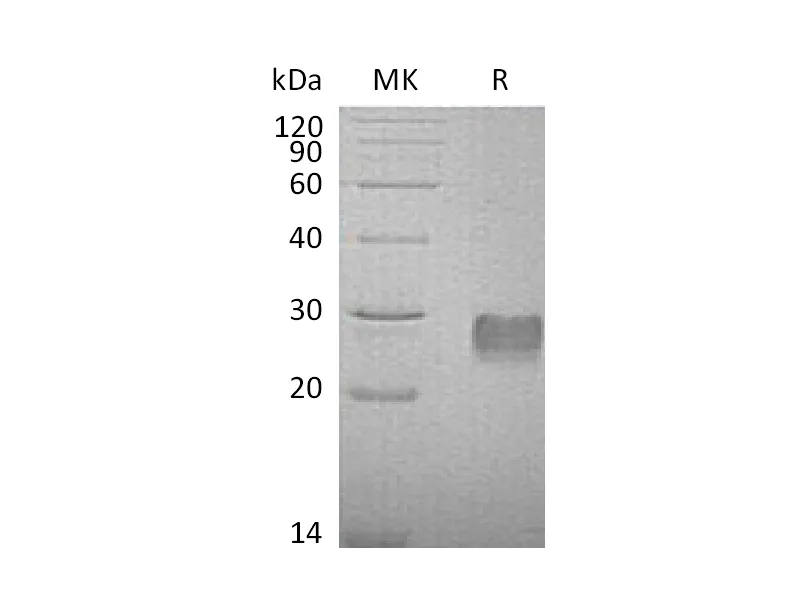
Size1:10μg price1:$136
Size2:50μg price2:$378
Size3:500μg price3:$1890
| Name | Recombinant Mouse IGFBP-6 (C-6His) |
| Purity | Greater than 95% as determined by reducing SDS-PAGE |
| Endotoxin level | <1 EU/µg as determined by LAL test. |
| Construction | Recombinant Mouse Insulin-Like Growth Factor-Binding Protein 6 is produced by our Mammalian expression system and the target gene encoding Ala26-Gly238 is expressed with a 6His tag at the C-terminus. |
| Accession # | P47880 |
| Host | Human Cells |
| Species | Mouse |
| Predicted Molecular Mass | 23.7 KDa |
| Buffer | Lyophilized from a 0.2 μm filtered solution of PBS, pH 7.4. |
| Form | Lyophilized |
| Shipping | The product is shipped at ambient temperature.Upon receipt, store it immediately at the temperature listed below. |
| Stability&Storage | Lyophilized protein should be stored at ≤ -20°C, stable for one year after receipt. Reconstituted protein solution can be stored at 2-8°C for 2-7 days. Aliquots of reconstituted samples are stable at ≤ -20°C for 3 months. |
| Reconstitution | Always centrifuge tubes before opening.Do not mix by vortex or pipetting.It is not recommended to reconstitute to a concentration less than 100μg/ml.Dissolve the lyophilized protein in distilled water.Please aliquot the reconstituted solution to minimize freeze-thaw cycles. |
Alternative Names
Insulin-like growth factor-binding protein 6; IBP-6; IGF-binding protein 6; IGFBP-6; Igfbp6; IBP6; IGF binding protein 6; insulin-like growth factor-binding protein 6
Background
Insulin-like growth factors (IGFs) comprise a family of endocrine, paracrine and autocrine polypeptides consisting of the ligands IGF1 and IGF2, two receptors (IGF1R, IGF2R), at least 6 IGF-binding proteins (IGFBPs) and IGFBP proteases. Among the binding proteins, IGFBP6 is unique because of its N-terminal disulfide linkages and its marked binding preference for IGF2. It is a potent inhibitor of the interaction between IGF2 and its receptor IGF1R, thus preventing major functions of IGF2, such as induction of proliferation, differentiation, cell adhesion, or colony formation. In particular, IGFBP-6 inhibited the growth of neuroblastoma and rhabdomyosarcoma xenografts. GFBP-6 is expressed in many tissues, including lung, liver, gut and the central nervous system.
Note
For Research Use Only , Not for Diagnostic Use.
